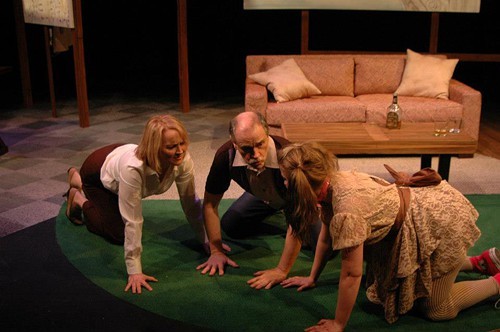Over the past three sessions, the Tennessee General Assembly, dominated by archconservatives from the Tea Party wing of the GOP, have brought us bill after bill expressing the fundamental convictions of their ideology: Keep the government out of business and cut benefits to the “unworthy.”
From a change to the workers’ compensation system to “tort reform” that caps damages to cuts to the Hall tax and to the eventual sunset of the inheritance tax (a levy which only affected 900 people a year at its peak), these changes to state law benefit a scant few Tennesseans.
Governor Haslam supported all of these bills.
A single piece of progressive legislation, the lowering of the sales tax on food by a quarter of 1 percent, was originally opposed by the administration before its passage in the final days of last year’s session. This year, an additional .25 percent cut in sales tax on food is a part of the governor’s legislative agenda and on track to pass.
So, while corporations and the wealthy saw their state taxes and potential liabilities drop by thousands of dollars a year, average Tennesseans saw a tax cut of a mere $3.65 annually — which will buy a burrito at your local Pilot Travel Center.
A recent Vanderbilt poll showed that Governor Haslam enjoys a 68 percent approval rating. That same poll also notes that 60 percent of Tennesseans think state government should place a priority on policies that help build the economy and create jobs. Haslam’s signature economic development bill was the aforementioned tort reform, passed in 2011. A study by the Economic Policy Institute shows that “reform” of this sort actually slows job growth.
Last year, the governor touted his “Tennessee Economic Miracle” to the chattering classes on cable TV. Since the beginning of Haslam’s term, poverty in Tennessee has increased to nearly 17 percent, wages have remained stagnant, and unemployment has tracked national averages. Some miracle.
None of the bills supported by the governor increases job creation or wages, nor do they extend the buying power of regular Tennesseans. Instead, all help wealthier people save money, which is an inefficient, if not downright chimerical, job-creation strategy.
Last year, the governor asked every agency of state government, other than education, to cut 5 percent from their budget. To cover the losses, state administrators trimmed staff and sought to erect barriers to eligibility. These changes don’t need legislative approval. They do, however, keep eligible people from receiving services.
According to a recent study authored by Cyril Chang of the University of Memphis, some 98,000 Tennesseans qualify for TennCare but are not in the system. Many of these working Tennesseans either don’t know they qualify or don’t have the time or resources to navigate the maze of requirements to meet eligibility. Many blame the federal government, but the state runs most federal social services through block grants. Block grants give the state authority to establish eligibility guidelines, within reason. The state has been pushing the edge of reason to the limit.
Through it all, Haslam’s policies further a system of government that focuses on helping those who don’t need it rather than those who do. It’s a policy agenda that fits nicely into a worldview that has dominated American politics for the past 30 years.
“Personal responsibility,” a longtime rallying cry of the GOP, holds that people who have access to quality health care, education, and capital accomplished this, because they chose to or worked hard for it — even if they were born into it.
On the other hand, people lacking such access don’t deserve help, because they made bad choices. If you’re not doing well, according to Republicans, it’s because of something you did or didn’t do, regardless of your circumstances.
While some may contest the strength of Haslam’s commitment to this brand of “personal responsibility,” it’s there, obscured behind his mushy language and overshadowed by the red-herring rhetoric of the General Assembly’s firebrands.
For the 2.6 million Tennesseans whose earnings are near or below poverty, and the 2.2 million more who are one financial disaster away from poverty, Haslam’s economic policies do absolutely nothing to provide relief.
In the end, the governor has shown he believes that if you aren’t making it, it’s not because of your circumstances, or bankers who tanked the financial system, or laws that actually slow job growth. It’s something you did to yourself.
The best average folks can expect are 365 pennies from Haslam, one a day — cold comfort for millions of Tennesseans struggling to get by.
Steve Ross is a former Democratic candidate for the Shelby County Commission, a member of the Shelby County Democratic Party Executive Committee, and a blogger about state and local politics at vibinc.com.



